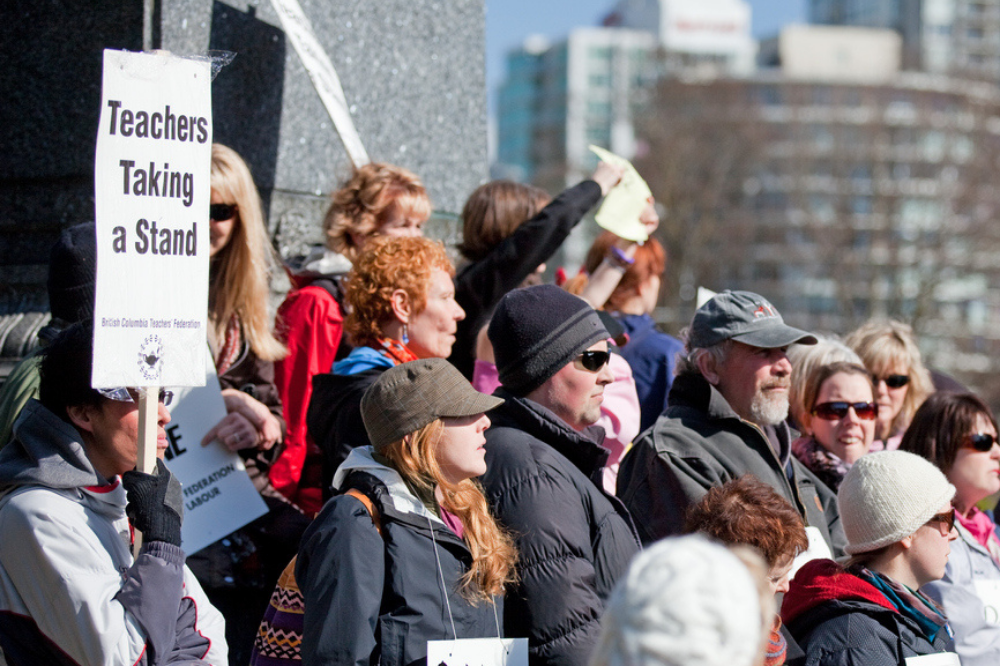
Thousands of NSW teachers are walking off the job today in protest over worsening pay and workloads conditions that threaten to exacerbate an already problematic teacher shortage in the state.
The stop work action is in defiance of a ruling last week by the Industrial Relations Commission that the strike be stopped and widens a deepening rift between the NSW Teachers Federation and the state government over the conditions of public school staff.
On Monday, the Senate Job Security Inquiry in Newcastle heard that a part-time casual teacher who works doing the same job and hours as a permanent teacher will earn $22,500 less over a year.
More broadly, the issue of remuneration is impacting on retention rates for teachers across all positions.
However, the NSW Government is refusing to budge on the current 2.5% wage gap, which many teachers and principals across the state find unsustainable. The Federation has been pushing for a salary increase of between 5 to 7.5% a year, as well as more sustainable workloads for school staff, but little progress has been in talks between the government and the union.
"It is disappointing that the only action the government has chosen to take on unsustainable workloads and uncompetitive salaries is legal action to try and prevent today’s strike,” Federation president Angelo Gavrielatos told The Educator.
The Premier cannot deny the anger and concern displayed today by teachers and principals in every corner of NSW. The dispute is now in the hands of the Premier who has the power to prevent further industrial action.”
'The Federation needs to come back to the table'
NSW Education Secretary Georgina Harrisson said the Federation needs to "come back to the table and engage in good faith with the negotiating process.”
“The Federation has made a number of claims in the lead up to this action that are misleading or simply untrue," she said.
“All organisations have vacancies and the vacancy rate in NSW for teachers is at a low level for an organisation of our size. A vacancy in a school is covered by a casual or temporary teacher and does not mean a class is without a teacher.”
Harrison said the Department is preparing to manage any future challenges of teacher supply and has commissioned research to understand the issue and developed a strategy to address it.
“Because it does not align with the Federation’s demands does not mean it will not be successful.”
'Teachers want the broken system to be fixed'
Professor Pasi Sahlberg, Deputy Director of the Gonski Institute for Education, say the teaching profession is in crisis in many other countries, not just in Australia.
"During the past decade we have witnessed declining social status of teaching and teachers, worsening job satisfaction, widening salary gaps between teachers’ and those with similar academic degrees in labour markets, and growing number of early career teachers leaving the profession," Professor Sahlberg told The Educator.
"No wonder, then, that many young Australians who would love to become teachers choose other career paths."
However, the most important thing for teachers, Professor Sahlberg says, is having a system that works.
"What teachers are asking today is more than just money – they're call for governments to fix a broken system, and the solution is not that complicated," he said.
"The teaching profession must be made more intellectually and financially attractive to both current teachers and to those students hoping to become teachers one day."
Professor Sahlberg said the government's "defence-style recruitment campaigns" to get more teachers into classrooms is seen by many teachers as a waste of money.
"Rather, the government should consider fixing the system by improving teachers’ working conditions to keep currently employed teachers in their jobs by reducing teachers’ administrative burden in schools so that teachers can focus on the essentials - teaching and learning," he said.
"Teacher pay must also be raised to attract more young people to choose teaching as their primary career path with competitive salary so that the emerging need of new teachers in the future will be properly met."
Equally important, says Professor Sahlberg, is hiring more qualified teachers to tenure positions to make teaching more attractive to experienced and exceptional teachers.
"One third of NSW teachers are temporary, in many schools this proportion is much higher, that makes building a stronger teaching profession in NSW harder.”


